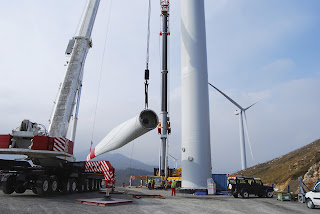hydrogen storage or hydrogen pipelines. The main problems are:
1. Micro-cracking due to hydrogen pressure
- Problem: hydrogen is a small molecule that can enter pores and micro-cracks in concrete. When hydrogen is under high pressure in these pores, it can expand the pores and enlarge cracks.
- Consequences:
- weakening of the mechanical strength of the concrete.
- Progressive damage due to cyclic loading.
Due to its very high density, UHPC has significantly fewer problems with this issue and its consequences.
2. Damage due to hydrogen embrittlement (indirect)
- Problem: Hydrogen does not chemically attack concrete, but it can embrittle steel reinforcement elements embedded in the concrete. This is referred to as hydrogen embrittlement.
- Consequences:
- Reduction in load-bearing capacity due to cracking and failure of the reinforcement steel.
- Shortening of the service life of the concrete structure.
Due to the very high material density, possible hydrogen embrittlement occurs after aconsiderably longer period of time and to a small extent.
3. Reaction with free ions and moisture
- Problem: Hydrogen can react with moisture and chemical compounds in the concrete (e.g. calcium hydroxide), creating by-products such as water or hydroxide ions.
- Consequences:
- Alteration of the chemical composition of the concrete, which can lead to a reduction in alkalinity.
- Accelerated corrosion of the reinforcement due to the loss of the passivation effect.
Occurs to a much lesser extent in UHPC
4. Pore structure and permeability
- Problem: Hydrogen can easily diffuse through the pore structure of concrete due to its small molecular size, especially in porous or poorly compacted concrete.
- Consequences:
- Loss of tightness, which is critical for hydrogen storage tanks or pipes.
- The ingress of hydrogen causes pressure build-up and damage.
Hydrogen can only penetrate UHPC concrete very slowly and under high pressure because UHPC concrete is an extremely dense material.
5. Increased risk of a hydrogen fire
- Problem: If hydrogen escapes from the concrete (e.g. through diffusion or crack formation), there is a risk of a hydrogen fire, as hydrogen is highly flammable.
- Consequences:
- Safety risk for the surrounding area.
- Additional thermal stress on the concrete.
with UHPC concrete.
Ultra-high performance concrete offers many advantages, but requires careful planning and adaptation when exposed to hydrogen, especially in demanding applications such as hydrogen storage or transport lines.
Phone: 0049 176 601 73146
E-mail: info@wpe-dk.dk
Homepage: www.wpe-dk.com
































